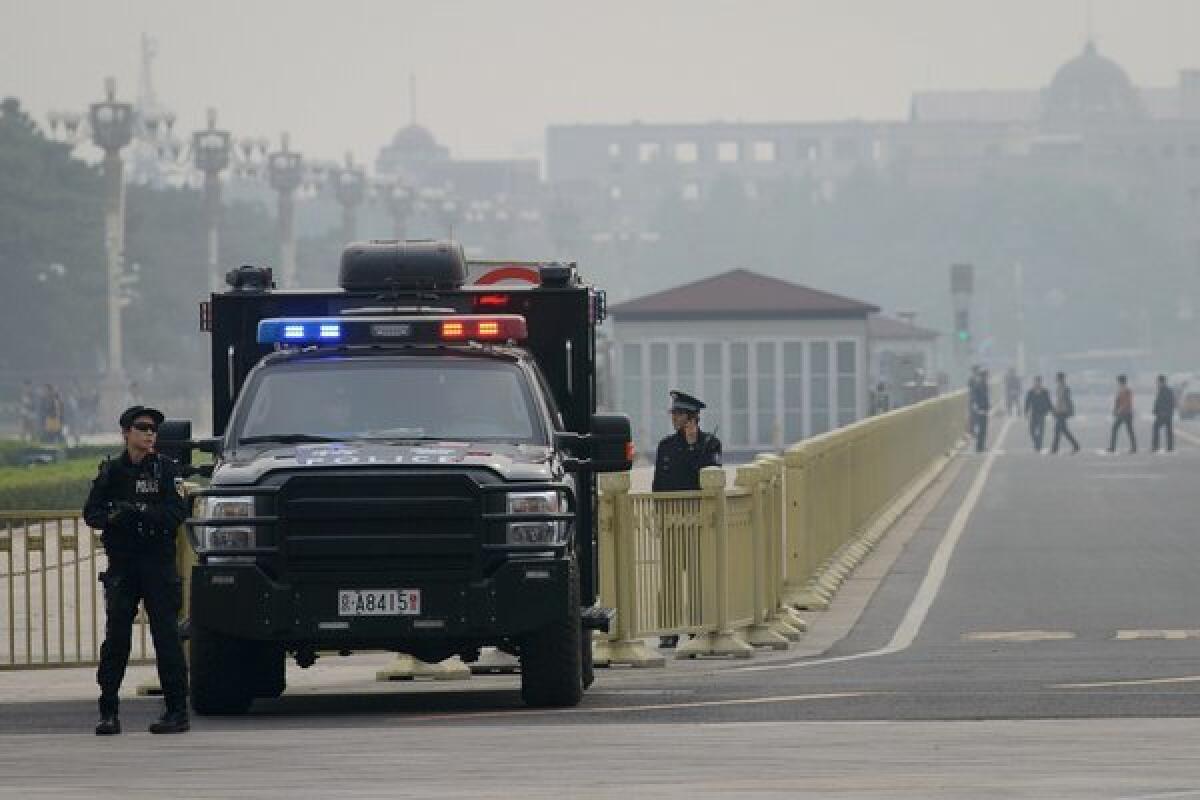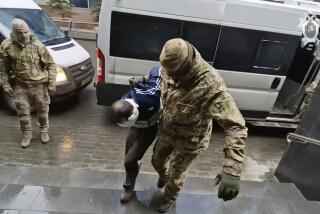Security official blames Tiananmen Square attack on Islamist group

BEIJING -- China’s top security official has concluded that the East Turkestan Islamic Movement, a separatist group, was responsible for the deadly attack Monday in which a car mowed down pedestrians at Beijing’s Tiananmen Square before bursting into flames.
“The violent terrorist incident in Beijing was a well-organized and plotted act. ... It was orchestrated by the Eastern Turkestan Islamic Movement terrorist organization that is entrenched in central and west Asian regions,” security chief Meng Jianzhu was quoted Thursday as telling Hong Kong-based Phoenix Television during a trip to Uzbekistan to attend a region security summit.
Separately, China’s CCTV revealed new details about Monday’s attack in which five people died -- two tourists and three members of a family of Uighurs, a Muslim ethnic minority from northwestern China’s Xinjiang region, who were in the car used in the attack. They included the 70-year-old mother of the driver.
The state news network identified the car as a Mercedes sports utility vehicle. It said that eight people from three families had been plotting in the southern Xinjiang city of Hotan since September and that they had raised $6,572 for the project.
“They decided to set up a terrorist group,” CCTV reported on its microblog account.
The network reported that the group drove to Beijing in early October and scouted out the location in Tiananmen Square three times before the attack. Five members of the group left for Urumqi, the capital of the Xinjiang region, while the three family members remained to carry out the mission, the network said. They were equipped with knives and just more than 100 gallons of gasoline used to ignite the car.
The East Turkestan Islamic Movement, named for an old Uighur name for Xinjiang, is a shadowy group that operates largely out of Afghanistan and Pakistan and is devoted to expelling the Chinese Communist Party from northwestern China. An associated group called the Turkestan Islamic Party took responsibility in 2011 for knife attacks and explosions in Xinjiang that left 40 people dead.
“This movement uses extreme violence and religion to create the maximum political impact,” Pan Zhiping, a retired professor from Xinjiang University, said Friday. “My Uighur friends absolutely hate it. Many Uighurs are the victims of an event like this, which will create more misunderstandings and worse ethnic relations.”
Experts say that the Uighur jihadist groups have been weakened by Pakistani military crackdowns and U.S. drone strikes, but that they remain a threat. The group released a propaganda video this year that purportedly shows children being trained to fire machine guns and assault rifles.
However, most attacks within China have used only the crudest of weapons: knives, axes, gasoline and occasionally Molotov cocktails.
Monday’s attack was the first that succeeded outside of Xinjiang. Chinese security were unnerved by the location, under the enormous portrait of Mao Tse-tung on Tiananmen Square and around the corner from the Great Hall of the People, where Chinese President Xi Jinping and the rest of the top leadership were meeting at the time.
“It has been the most direct and real threat to our security, and has damaged the security of other countries and regions,” Foreign Ministry spokeswoman Hua Chunying told reporters at a briefing Friday.
The Uighurs are a Turkic people more closely related to Uzbeks and Kazakhs than to Chinese. The Uighurs number about 9 million in China.
ALSO:
Brazil’s Eike Batista: From billionaire to bankruptcy
Pakistani Taliban leader reportedly at site of drone strike
Dominican Republic citizenship ruling stirs outcry across Caribbean
Twitter: @BarbaraDemick
More to Read
Sign up for Essential California
The most important California stories and recommendations in your inbox every morning.
You may occasionally receive promotional content from the Los Angeles Times.








